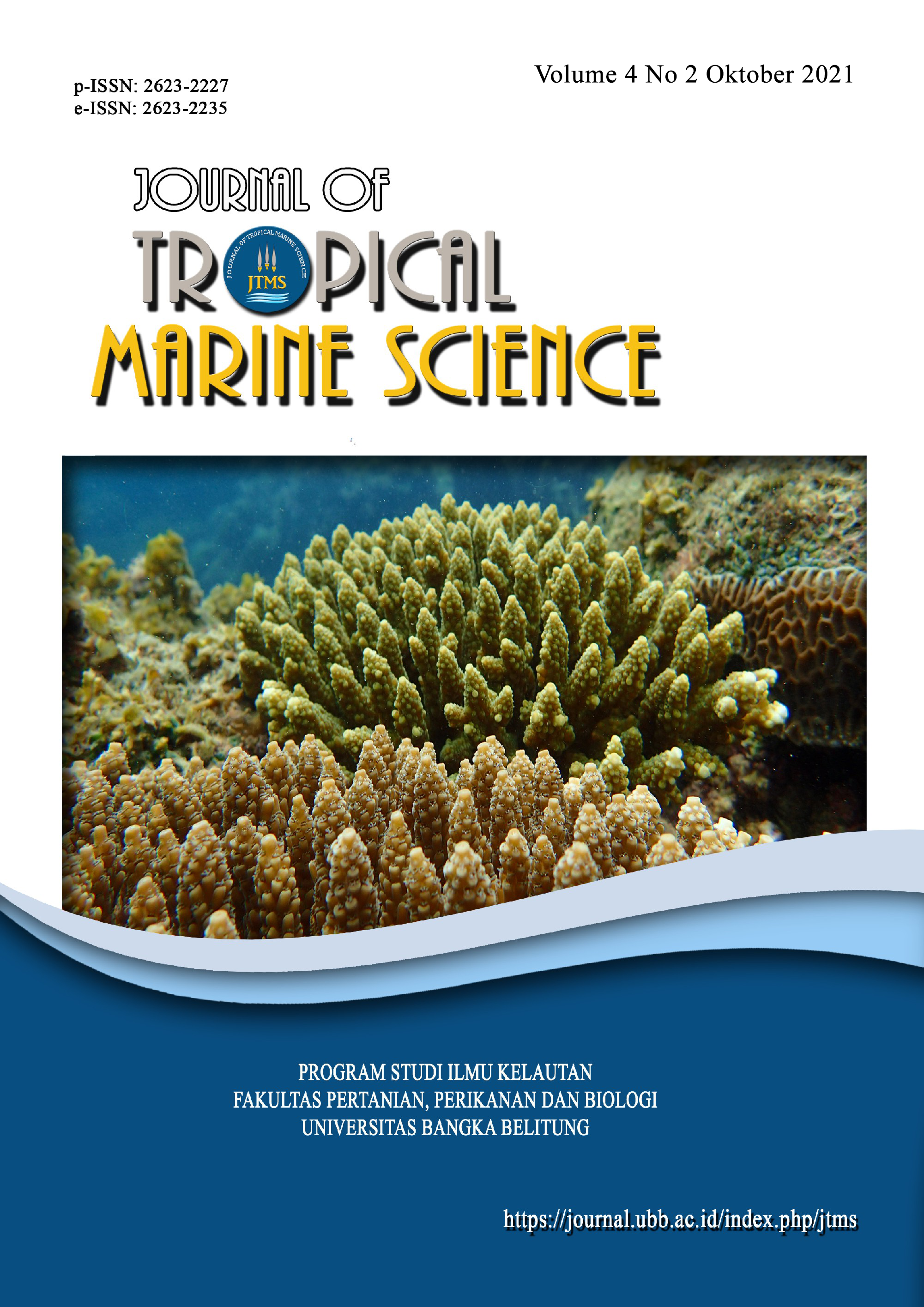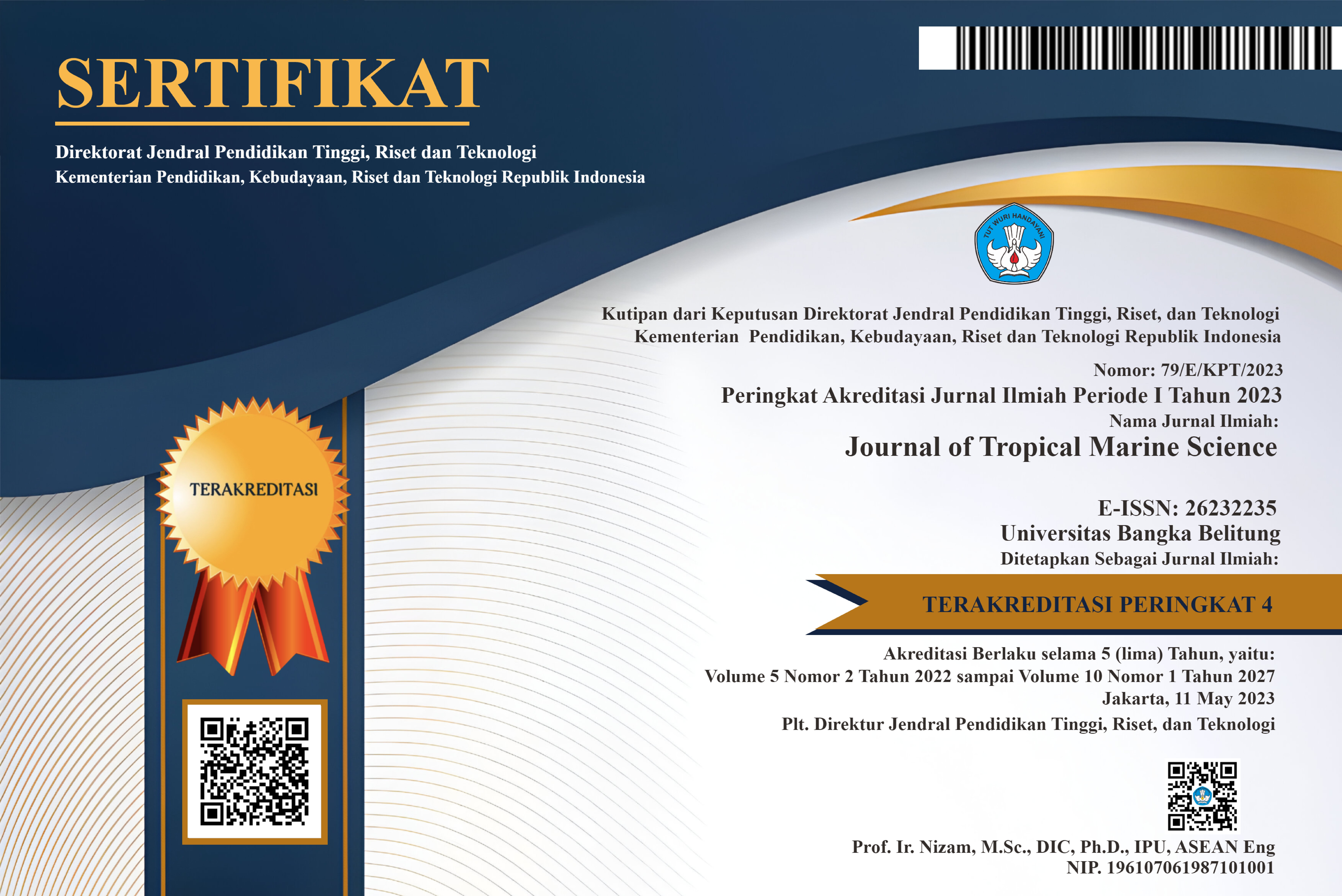Structure Of Gastropod Community In The Seagrass Ecosystem Of The Puding Beach Of South Bangka District
Abstract
Gastropods are an important component of the food chain in seagrass ecosystem, where gastropods are basic animals of detritus feeder and litter from fallen seagrass leaves and circulate substance suspended in water. The abundance and distribution of gastropods is influenced by local environmental factors, food availability, predatory and competition. This research was conducted from September to November 2018 at Puding beach, South Bangka. The data collected consisted of community structure and gastropods density, seagrass density, and aquatic chemical physics factors. Based on the result of research on structure of gastropod communities on the Puding beach fall into category medium and highest density Cerithium granosum 12778 ind/Ha and the lowest density Turbinella fusus 556 ind/Ha, the highest seagrass density of Halodule uninervis is 141 teg/m2 and the lowest density is 7 teg/m2. Based on the analysis of seagrass density correlation with gastropod density obtained the value of coefficient of determinance (R2) = 0,5864 and correlation coefficient (r) = 0,766 which indicates the relationship of seagrass density and gastropod density is correlated positively and strongly.
Keywords:
Gastropods, Gastropods density, detritus feeder, seagrass, seagrass density
Downloads
Download data is not yet available.
Published
2021-05-11
Section
Articles














